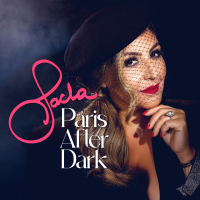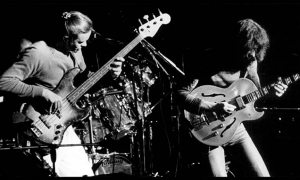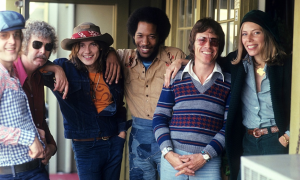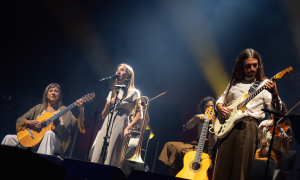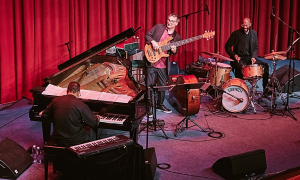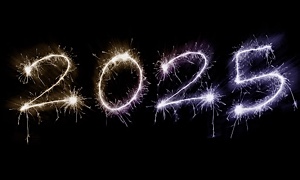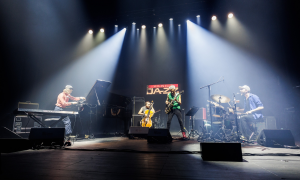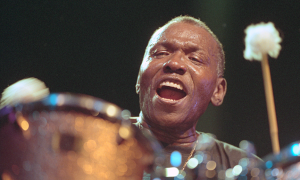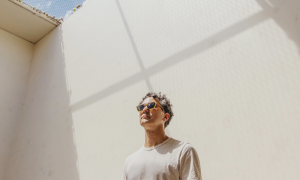Home » Jazz Articles » Profile » Sam Rivers: High Octane Octogenarian
Sam Rivers: High Octane Octogenarian
When we
 Sam Rivers is the jazz world’s high octane octogenarian. The energetic 81-year-old multi-instrumentalist may have left New York for Florida, but he’s far from settled and nowhere near retirement. His visionary conception of complex composition and spontaneous creation, unmistakably manifest in the imaginative music of his trio and orchestra, remains revolutionary and yet, unfortunately, largely underestimated by the musical establishment.
Sam Rivers is the jazz world’s high octane octogenarian. The energetic 81-year-old multi-instrumentalist may have left New York for Florida, but he’s far from settled and nowhere near retirement. His visionary conception of complex composition and spontaneous creation, unmistakably manifest in the imaginative music of his trio and orchestra, remains revolutionary and yet, unfortunately, largely underestimated by the musical establishment. Rivers was born in Reno, Okla. on September 25, 1923, and grew up on the road. He remembers, “My mother and father were musicians. My grandfather and his two sisters were musicians. My mother was a puritan and she made me practice very diligently. I practiced and I studied and I was able to fix my own philosophy of doing music, of composing, which is in many [different] ways, but I haven’t really followed anybody else. I mean that’s the idea of being a jazz musician, to be an individual, to make a statement. The imitators make more money of course, but the originals have to keep working and keep making a contribution.”
A true original, Rivers keeps working and making many contributions. He began gaining notice in the jazz world as a member of Herb Pomeroy’s legendary big band in Boston in the ‘50s, but national notoriety did not come until 1964, when he joined the Miles Davis Quintet. He recalls, “I had gone with Miles Davis because Tony Williams was my drummer. He left Boston with Jackie McLean in The Connection and Miles hired him soon afterwards. Tony had Miles listen to some tapes and he hired me right away, but the thing was that there had already been an agreement between Miles and Art Blakey. When Wayne Shorter came back in town he was going to go with Miles and I was going to go with Blakey, but they didn’t tell me, so I went off with Andrew Hill.”
 Rivers would go on to record a series of groundbreaking Blue Note records ( Fuchsia Swing Song , Contours , Involution ) with Hill, Williams, Bobby Hutcherson, Larry Young and most importantly, as the leader of his own forward looking bands performing his imaginative compositions. Although considered avant-garde, the music on these important records evinced a thoughtful classicism that was a refreshing departure from the hedonistic hollering that was increasingly dominating the free jazz movement. He would later work in Cecil Taylor’s Unit with Jimmy Lyons and Andrew Cyrille, describing the encounter as “one of the exhilarating experiences of my career.” Similarly exciting was Rivers’ intuitive and inventive trio, featuring Dave Holland on bass and Barry Altschul on drums, which would spontaneously create inspired music for hours on end as the leader moved from tenor to soprano saxophone, to flute, to piano and back, punctuating the music with his patented whooping exclamations of joy.
Rivers would go on to record a series of groundbreaking Blue Note records ( Fuchsia Swing Song , Contours , Involution ) with Hill, Williams, Bobby Hutcherson, Larry Young and most importantly, as the leader of his own forward looking bands performing his imaginative compositions. Although considered avant-garde, the music on these important records evinced a thoughtful classicism that was a refreshing departure from the hedonistic hollering that was increasingly dominating the free jazz movement. He would later work in Cecil Taylor’s Unit with Jimmy Lyons and Andrew Cyrille, describing the encounter as “one of the exhilarating experiences of my career.” Similarly exciting was Rivers’ intuitive and inventive trio, featuring Dave Holland on bass and Barry Altschul on drums, which would spontaneously create inspired music for hours on end as the leader moved from tenor to soprano saxophone, to flute, to piano and back, punctuating the music with his patented whooping exclamations of joy. Just as important as his creativity as a musician, was River’s role as the patriarch of the downtown loft jazz scene in the ‘70s, as the proprietor (with his wife Bea) of the world famous Studio Rivbea, on Bond Street in what is now called Noho. “I was just there at the right time,” he humbly opines, “because it just so happens there was an influx of musicians ... they all decided to come to New York at the same time. I had a performance space where I was just rehearsing, but then I started giving concerts and we were known all around the world.” Wildflowers , a five record set, recorded during a single week of performances, is a Who’s Who of the free jazz movement of the day, documenting the importance of the venue.
The musicians performing on the discs included, among others, Ahmed Abdullah, Hamiet Bluiett, Anthony Braxton, Marion Brown, Dave Burrell, Jerome Cooper, Andrew Cyrille, Olu Dara, Julius Hemphill, Oliver Lake, Jimmy Lyons, Ken McIntyre, Roscoe Mitchell, David Murray, Sunny Murray, Rivers, Leo Smith, and Henry Threadgill, many of whom were barely known in the U.S. at the time. Not long after the release of the records Rivers closed the Rivbea and moved to New Jersey. He remembers, “I stopped doing it in New York because once the guys got known the clubs started hiring them. I couldn’t pay the kind of money the clubs were because I wasn’t really charging...I would ask for a donation. I wasn’t selling all this whiskey. If you wanted a beer you’d bring it yourself.”
During the ‘80s Rivers lead several progressive electric quartets featuring guitarists Kevin Eubanks, Darryl Thompson and Ed Cherry. It was the latter’s membership in his quartet that led Rivers to a somewhat surprising stint with Dizzy Gillespie. “Ed Cherry was in my band and Dizzy called him, so I just called because Ed Cherry said that Dizzy was making up a new band,” Rivers recalls. “I just called up Dizzy. I said, ‘Merry Christmas, Dizzy, [it was Christmas], if you ever need a tenor player give me a call.’ He said, ‘What’s your name. What’s your number?’ And the next week he called me. It was the start of a new thing. Ignacio Berroa on drums. John Lee on bass. Ed Cherry, myself and Dizzy. Very good group, an excellent group, I loved playing with them. I was also with the United Nations band, Dizzy’s orchestra. I stayed with Dizzy for four years.”
It was during his tenure with Gillespie that Rivers relocated to Orlando. “We were traveling all around and I could have gone anywhere,” he remembers. “We were planning to leave New York. So I could have gone to New Mexico or Arizona or California, you know, Seattle. I had offers from all of those places to teach. But I didn’t want to teach and the musicians down here they said we have enough musicians, if you want to come down here there’s a big band waiting for you with your music. And that’s why I came here; the musicians were so good. All the musicians in my orchestra, my jazz orchestra, are all professors of music. They all teach here. It’s quite an [organization]. I mean I’m very fortunate because I can bring in all my music, anything I write, these musicians are able to play it the first time down. So I mean it’s a very, very, very great experience for me.”

Rivers more traditional orchestral jazz is documented on two Grammy nominated RCA compact discs, Inspiration and Culmination , by his Rivbea All-Star Orchestra. The forthcoming Aurora, by the Orlando orchestra, is more representative of his current work. The nucleus of both ensembles is Rivers’ trio of the past 12 years, with Doug Mathews and Anthony Cole; a group he proudly describes as “unique in the history of jazz.” The union of the three multi-instrumentalists is the most versatile small group making music today, sometimes replicating the style of the leader’s earlier trios and at others resembling the World Saxophone Quartet or Cecil Taylor’s Unit. Rivers explains, “Doug is a classical musician. He reads on bass clarinet, on double bass violin, also on bass guitar and drums. Anthony plays drums; he also plays tenor saxophone and sometimes we have compositions for two pianos with Anthony and myself. And then sometimes Anthony can play the electric bass guitar and Doug plays drums. So we have it all covered. It’s never been done before. And when we’re finished they know it’s unique. They’ll never hear anything like it again their lifetime. Unless they hear me again.”
 In a recent concert in San Diego, trombonist George Lewis and pianist Anthony Davis joined the group. At an upcoming engagement at the Iridium Rivers will play in an all-star trio with Jason Moran and Reggie Workman. The saxophonist, who appeared on Workman’s Summit Conference and Cerebral Caverns discs and with Moran on his Black Stars date, would have preferred to perform with his own group, but is nonetheless excited about the appearance. “You don’t need compositions for the trio,” he says. “You really don’t need any music at all, but we do have some themes. We have some melodies we will improvise on and some free things, also. There’s no real set program. We like to surprise ourselves, too. I haven’t the faintest idea what’s going to happen - I like it that way. I look forward to it because I don’t know what’s going to happen. It’s far more challenging than if I knew what was going to happen, then it might even get boring.”
In a recent concert in San Diego, trombonist George Lewis and pianist Anthony Davis joined the group. At an upcoming engagement at the Iridium Rivers will play in an all-star trio with Jason Moran and Reggie Workman. The saxophonist, who appeared on Workman’s Summit Conference and Cerebral Caverns discs and with Moran on his Black Stars date, would have preferred to perform with his own group, but is nonetheless excited about the appearance. “You don’t need compositions for the trio,” he says. “You really don’t need any music at all, but we do have some themes. We have some melodies we will improvise on and some free things, also. There’s no real set program. We like to surprise ourselves, too. I haven’t the faintest idea what’s going to happen - I like it that way. I look forward to it because I don’t know what’s going to happen. It’s far more challenging than if I knew what was going to happen, then it might even get boring.”
There’s little chance of that happening with Rivers on the bandstand. Although he has already changed the course of jazz, he continues to look to the future. “One day I’m going to get a grant and I’m going to show everybody,” he says. “They give these grants to people and they get these grants and you never hear from them again. I feel that they probably know that I would do something with it. I would create a scene like I did in New York on my own money, like Studio Rivbea. I would like to get a grant so I could change the course of the music. Preserve some of the music that creative musicians are doing...because I know how to do it.”
Suggested Listening
Fuchsia Swing Song (Blue Note, 1964)
Dimensions and Extensions (Blue Note, 1967)
Streams (Impulse!, 1973)
Crystals (Impulse!-ABC-Universal, 1974)
Waves (Tomato, 1978)
Inspiration (RCA, 1999)
Celebration (Positone-Rhombus, 2004)
Visit Sam Rivers on the web at www.samrivers.com .
Photo Credit
Mark Sheldon (sax)
John Ballon (flute)
Tags
PREVIOUS / NEXT
Support All About Jazz
 All About Jazz has been a pillar of jazz since 1995, championing it as an art form and, more importantly, supporting the musicians who make it. Our enduring commitment has made "AAJ" one of the most culturally important websites of its kind, read by hundreds of thousands of fans, musicians and industry figures every month.
All About Jazz has been a pillar of jazz since 1995, championing it as an art form and, more importantly, supporting the musicians who make it. Our enduring commitment has made "AAJ" one of the most culturally important websites of its kind, read by hundreds of thousands of fans, musicians and industry figures every month.












